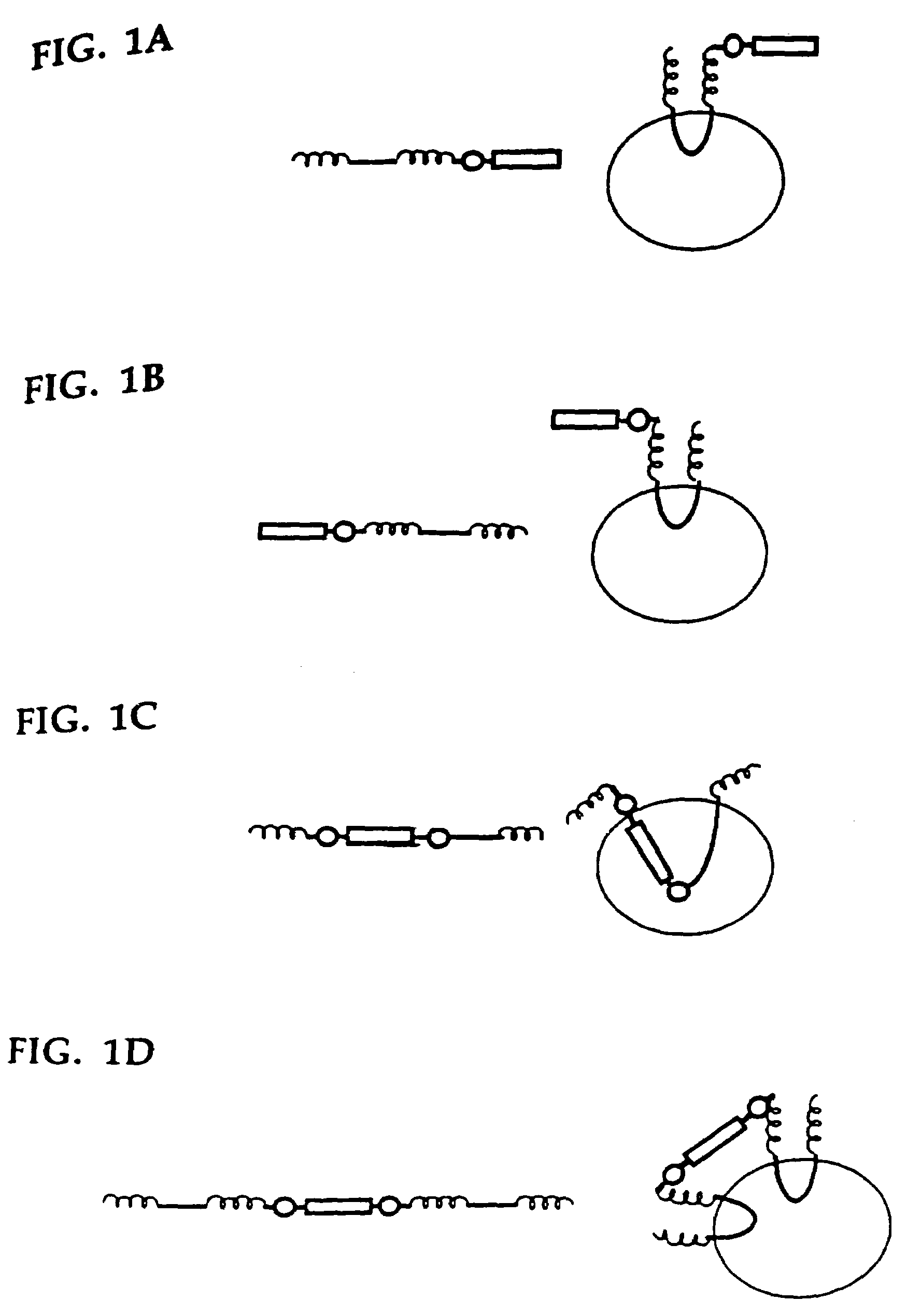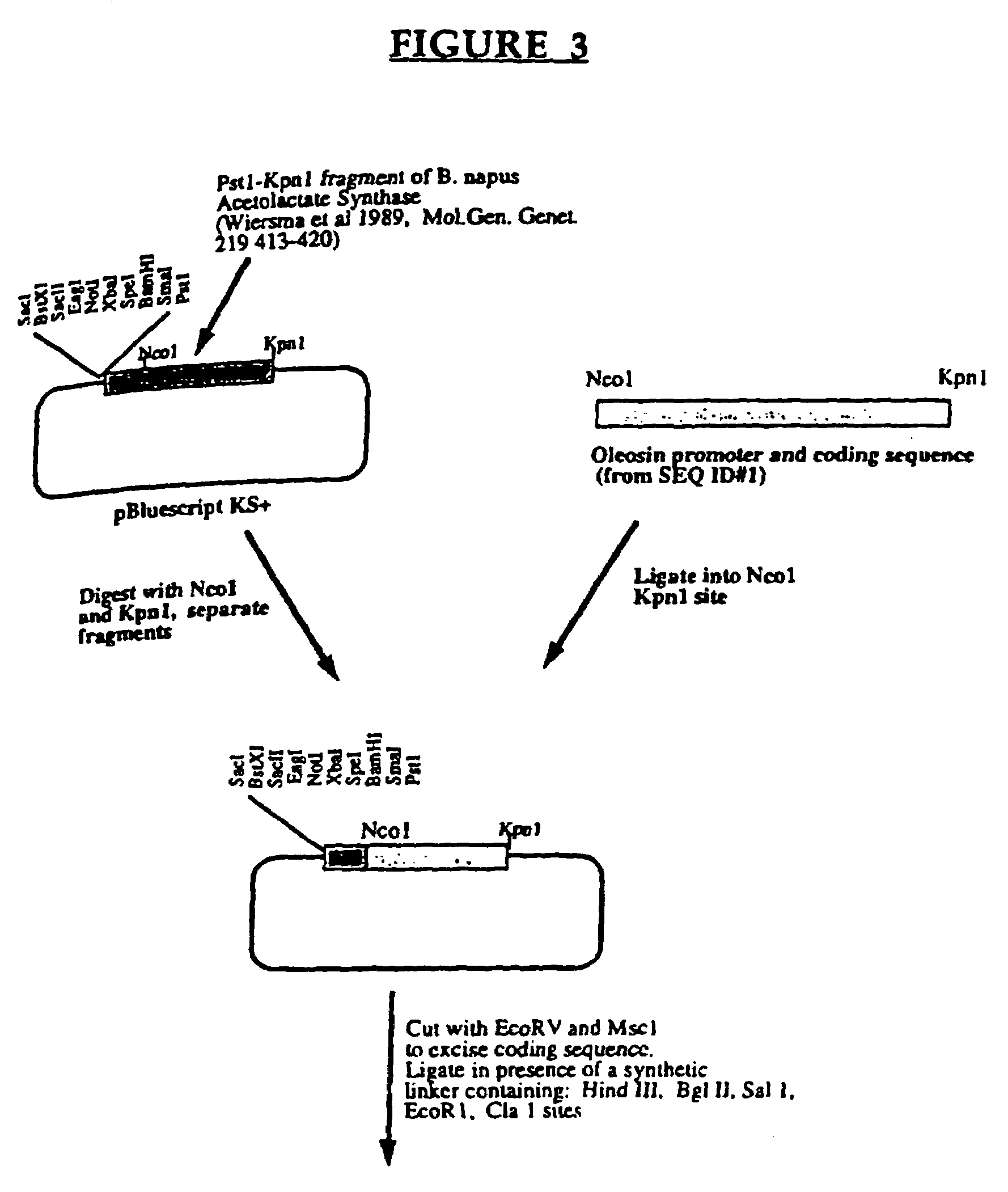Preparation of heterologous proteins on oil bodies
a technology of heterologous proteins and oil bodies, applied in the field of preparation of heterologous proteins, can solve the problems of increasing the cost of recombinant protein production, prohibiting the establishment of substantial manufacturing for all but high value proteins, and negative economic factors in the establishment of facilities and maintenance costs
- Summary
- Abstract
- Description
- Claims
- Application Information
AI Technical Summary
Benefits of technology
Problems solved by technology
Method used
Image
Examples
example 1
Isolation of Plant Oleosin Gene
[0113]Oil body proteins can be isolated from a variety of sources. The isolation of an oil body protein gene termed oleosin from the plant species Arabidopsis thaliana is described herein. Similar methods may be used by a person skilled in the art to isolate oil body proteins from other sources. In this example, a Brassica napus oleosin gene (described by Murphy et al, 1991, Biochim Biophys Acta 1088:86-94) was used to screen a genomic library of A. thaliana (cv. Columbia) constructed in the Lamda cloning vector EMBL-3A (Obtained from Stratagene Laboratories) using standard techniques. The screening resulted in the isolation of an EMBL 3A clone (referred to as clone I2.1) containing a 15 kb genomic fragment which contains a oleosin gene from A. thaliana. The oleosin gene coding region is contained within a 6.6 kb Kpn I restriction fragment of this 15 kb fragment. The 6.6 kb Kpn I restriction fragment was further mapped and a 1.8 kb Nco I / Kpn I fragment...
example 2
Modification of a Native Oleosin for Expression of Heterologous Proteins
[0114]The DNA fragment described in example 1 that contains the oleosin gene and regulatory elements was incorporated into an expression cassette for use with a variety of foreign / alternative genes. The following illustrates the modification made to the native A. thaliana oleosin gene, especially the promoter and coding region, in order to use this gene to illustrate the invention. It is contemplated that a variety of techniques can be used to obtain recombinant molecules, accordingly this example is offered by way of illustration and not limitation. The A. thaliana oleosin gene described in example 1 was cloned as a 1803 bp fragment flanked by Nco 1 and Kpn 1 sites in a vector called pPAW4. The plasmid pPAW4 is a cloning vehicle derived from the plasmid pPAW1 which is a Bluescript plasmid (Clonetech Laboratories) containing a Brassica napus Acetolactate synthase (ALS) gene (Wiersma et al., 1989, Mol Gen Genet. ...
example 3
Using the Arabidopsis Oleosin Promoter For Controlling Expression in Heterologous Plant Species
[0117]To demonstrate expression of the oleosin promoter and to determine the amount of 5′ regulatory region required for expression in transgenic plants, a small number of DNA constructs were made that contain the 5′ transcriptional initiation region of the Arabidopsis oleosin gene joined to the coding region for β-glucuronidase (GUS). These constructs were prepared using PCR. The constructs are designated according to the amount of the oleosin 5′ region contained, for example, the 2500 construct has approximately 2500 base pairs of the oleosin 5′ region. The constructs were introduced into Brassica napus and tobacco and the expression of the β-glucuronidase (GUS) gene was measured as described in detail below. The constructs were made using standard molecular biology techniques, including restriction enzyme digestion, ligation and polymerase chain reaction (PCR). As an illustration of the...
PUM
| Property | Measurement | Unit |
|---|---|---|
| Temperature | aaaaa | aaaaa |
| Size | aaaaa | aaaaa |
| Nucleic acid sequence | aaaaa | aaaaa |
Abstract
Description
Claims
Application Information
 Login to View More
Login to View More - R&D
- Intellectual Property
- Life Sciences
- Materials
- Tech Scout
- Unparalleled Data Quality
- Higher Quality Content
- 60% Fewer Hallucinations
Browse by: Latest US Patents, China's latest patents, Technical Efficacy Thesaurus, Application Domain, Technology Topic, Popular Technical Reports.
© 2025 PatSnap. All rights reserved.Legal|Privacy policy|Modern Slavery Act Transparency Statement|Sitemap|About US| Contact US: help@patsnap.com



